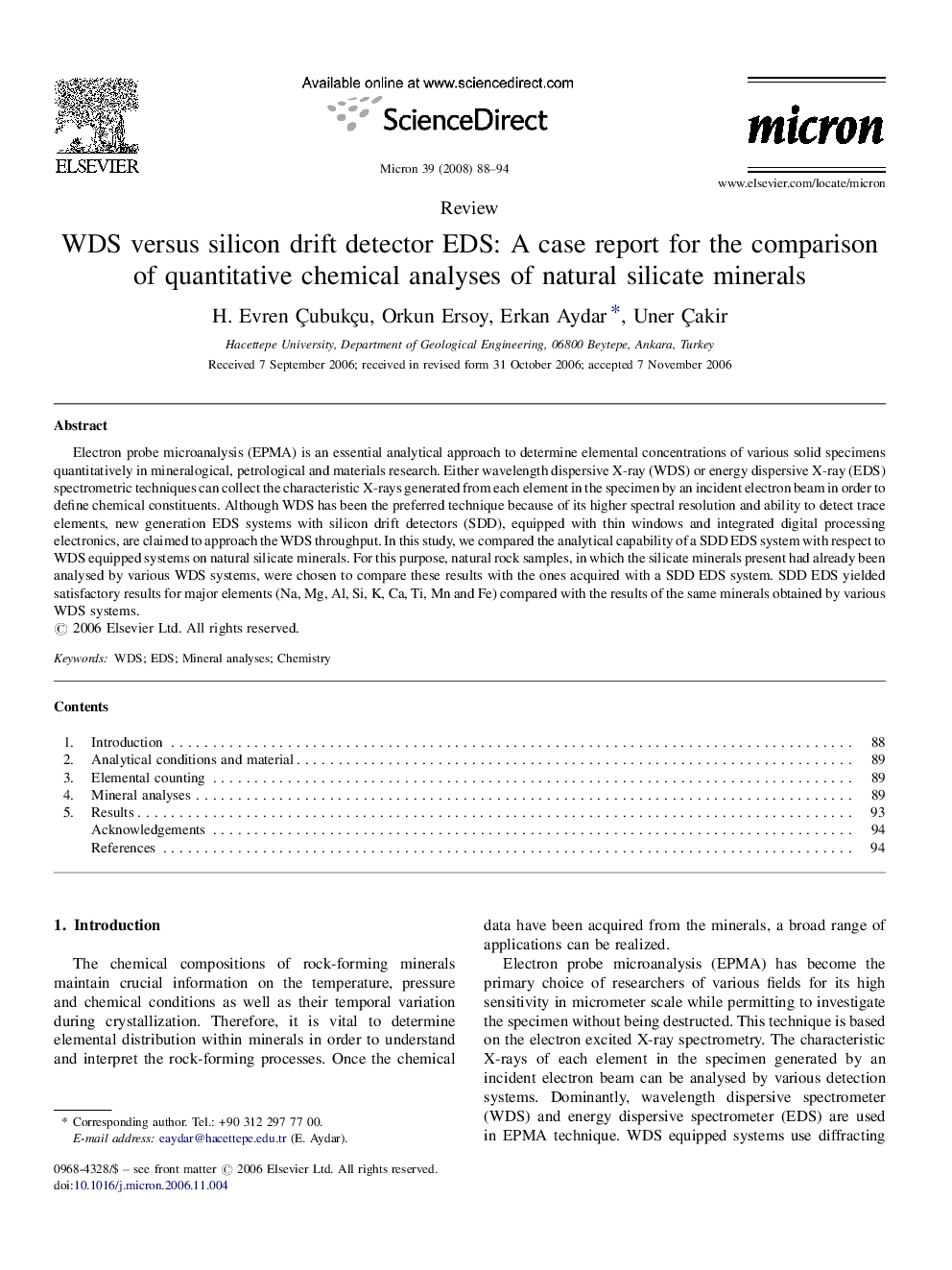| Article ID | Journal | Published Year | Pages | File Type |
|---|---|---|---|---|
| 1589914 | Micron | 2008 | 7 Pages |
Electron probe microanalysis (EPMA) is an essential analytical approach to determine elemental concentrations of various solid specimens quantitatively in mineralogical, petrological and materials research. Either wavelength dispersive X-ray (WDS) or energy dispersive X-ray (EDS) spectrometric techniques can collect the characteristic X-rays generated from each element in the specimen by an incident electron beam in order to define chemical constituents. Although WDS has been the preferred technique because of its higher spectral resolution and ability to detect trace elements, new generation EDS systems with silicon drift detectors (SDD), equipped with thin windows and integrated digital processing electronics, are claimed to approach the WDS throughput. In this study, we compared the analytical capability of a SDD EDS system with respect to WDS equipped systems on natural silicate minerals. For this purpose, natural rock samples, in which the silicate minerals present had already been analysed by various WDS systems, were chosen to compare these results with the ones acquired with a SDD EDS system. SDD EDS yielded satisfactory results for major elements (Na, Mg, Al, Si, K, Ca, Ti, Mn and Fe) compared with the results of the same minerals obtained by various WDS systems.
